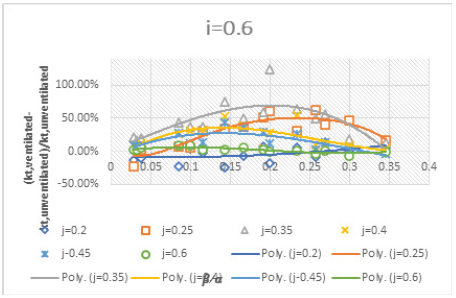- Submissions

Full Text
Examines in Marine Biology & Oceanography
Effect of Ventilation on Surface-Piercing Propeller’s Performance
Ali Amini*
School of Mechanical Engineering, Iran
*Corresponding author: Ali Amini, School of Mechanical Engineering, Iran University of Science and Technology, Tehran, Iran
Submission: September 01, 2021;Published: October 05, 2021

ISSN 2578-031X Volume4 Issue3
Abstract
Keywords: Surface Piercing Propellers (SPP); Low advance coefficient; Ventilation mechanism
Opinion
There are suitable studies for the evaluation of Surface-Piercing Propeller performance as well as some parametric study on the characteristics of this kind of propeller. Despite the role and importance of ventilation in the SPP, there is a lack of research in this area. The objective of the present research is to investigate experimentally the effects of aeration on the performance of the SPP. This can lead to performance improvements, especially on the propeller thrust coefficient at a lower advance coefficient. In current research, using an aeration mechanism and an air injection upstream of the propeller as shown in Figure 1, the improvement of the trust coefficient has been studied in a series of model tests in open water condition using the SPP flow loop mechanism. To assess the hydrodynamic behavior of the propeller model, the trust applied by the propeller is measured by a calibrated 5-component balance and gives the trust coefficient of the propeller as a non-dimensional number. Then, with the aeration mechanism, the air injected at special horizontal and vertical distances from the propeller and the thrust coefficients are compared to non-ventilated cases [1].
As for the results, effects of the variation of ventilation immersion ratio of 0.6 at different advance coefficients on the performance of the SPP is shown in Figure 2. Performance of surface piercing propellers at speeds lower than 40 knots has been reduced compared to the other propulsion systems which is the main challenge for using SPPs at lower speeds, especially at starting mode of the vessels. When the vessel’s speed reaches 40 knots and above, better performance of propellers can be achieved. The present paper contributes to the improvement of the SPP thrust at low advance coefficients by using ventilation and air injection upstream of the propeller.
Figure 1:A view of test system and open water tunnel [1].

Figure 2:Diagram of the improvement percentage of the thrust coefficient in terms of β⁄α at different advance coefficients and in the immersion of 0.6 [1].

References
© 2021 Ali Amini. This is an open access article distributed under the terms of the Creative Commons Attribution License , which permits unrestricted use, distribution, and build upon your work non-commercially.
 a Creative Commons Attribution 4.0 International License. Based on a work at www.crimsonpublishers.com.
Best viewed in
a Creative Commons Attribution 4.0 International License. Based on a work at www.crimsonpublishers.com.
Best viewed in 







.jpg)






























 Editorial Board Registrations
Editorial Board Registrations Submit your Article
Submit your Article Refer a Friend
Refer a Friend Advertise With Us
Advertise With Us
.jpg)






.jpg)














.bmp)
.jpg)
.png)
.jpg)










.jpg)






.png)

.png)



.png)






